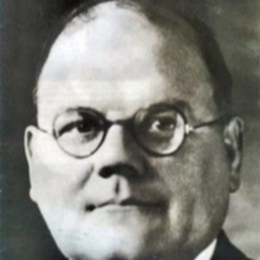
1899 - 1983
John Bodkin Adams
Summary
Name:
Years Active:
1946 - 1956Birth:
January 21, 1899Status:
DeceasedClass:
MurdererVictims:
1+Method:
PoisoningDeath:
July 04, 1983Nationality:
United Kingdom
1899 - 1983
John Bodkin Adams
Summary: Murderer
Name:
John Bodkin AdamsStatus:
DeceasedVictims:
1+Method:
PoisoningNationality:
United KingdomBirth:
January 21, 1899Death:
July 04, 1983Years Active:
1946 - 1956Date Convicted:
July 26, 1957bio
John Bodkin Adams was born on January 21, 1899, in Randalstown, Ulster, Ireland. He grew up in a deeply religious family that followed the Plymouth Brethren, a strict Protestant sect. Adams's father, Samuel, was a preacher and a watchmaker. He had a great interest in cars, which he passed down to his son, John. Samuel and his wife, Ellen Bodkin, married in 1896 and welcomed their first son, John, before having another child, William Samuel, in 1903. Adams faced significant loss early in his life. His father died of a stroke in 1914, and four years later, William died during the influenza pandemic of 1918.
Adams attended the Coleraine Academical Institution for several years. At age 17, he enrolled at The Queen's University of Belfast. His teachers viewed him as a "plodder" and a "lone wolf." He struggled academically and missed a year due to illness, likely tuberculosis. He graduated in 1921 but did not earn honors. After graduation, he worked as an assistant houseman at the Bristol Royal Infirmary for a year, but he did not perform well, prompting a recommendation from his supervisor to apply for a job as a general practitioner in Eastbourne, Sussex.
Adams moved to Eastbourne in 1922 and lived with his mother and cousin, Sarah Florence Henry. In 1929, he borrowed £2,000 from a patient to purchase an eighteen-room house called Kent Lodge, located on a prestigious street. He began to invite himself and his family to meals at the homes of his patients, often charging items to their accounts without permission. Adams’s behavior started to draw attention, and he became known locally for his unconventional methods.
In 1935, he inherited a substantial amount of money from a deceased patient, Matilda Whitton. This led to rumors about his dealings with patients. Over the years, he received anonymous postcards implying he harmed his patients. Despite these rumors, Adams continued to build his reputation as a physician, gaining a diploma in anesthesia in 1941 and working part-time at a local hospital. However, he developed a negative reputation among some staff for his careless behavior during procedures.
Adams faced personal losses as well; his mother passed away in 1943, and later, in 1952, his cousin Sarah was diagnosed with cancer. Adams was known to have provided her with an injection shortly before her death. By the mid-1950s, he had become a wealthy doctor in the region, caring for influential individuals and being mentioned in numerous patients' wills. However, rumors and suspicions continued to surround his practice, ultimately leading to an investigation into his medical activities.
murder story
On July 23, 1956, Gertrude Hullett died while under the care of Dr. John Bodkin Adams. The initial report from the coroner suggested her death was suspicious and not natural. This prompted an investigation. Multiple individuals who were in contact with her before her death provided statements. Some believed she had committed suicide, while others raised concerns about Adams's role in her care.
Further investigation revealed that a second post-mortem examination indicated barbiturate poisoning as the cause of death. Over the following weeks, investigators examined 310 death certificates of Adams's patients, with 163 of those deemed worthy of closer scrutiny. A large percentage of these patients had died of cerebral thrombosis or cerebral hemorrhage, which was unusually high compared to the average rate among elderly, bedridden patients.
The investigation took a deeper dive into Adams's treatment records and the circumstances surrounding his patients’ deaths. Witnesses, including nurses, claimed that Adams administered "special injections" that were not disclosed to them. There were suggestions that he isolated patients from their families and restricted their communication, leading to additional suspicions.
As the investigation continued, several doctors in Eastbourne advised against cooperating with the police due to concerns over patient confidentiality. This caused frustration among investigators trying to gather evidence against Adams. The case was then handed over to the Metropolitan Police, who had more resources to pursue it. Detective Superintendent Herbert Hannam led this investigation, suspecting Adams might have murdered several elderly patients for financial gain.
On November 24, 1956, Adams was initially arrested on charges related to misrepresentation on cremation certificates and potentially related drug offenses. He was later formally charged with the murder of Edith Alice Morrell on December 19, 1956. During police questioning, Adams expressed disbelief that he could be charged with murder, claiming the patient was already dying.
As the case unfolded, Adams was informed about the serious accusations against him. The prosecution argued that Adams had administered lethal dosages of drugs to his patients, particularly Mrs. Morrell. The trial began in March 1957, and significant attention was paid to the prosecution's evidence and Adams's treatment methods.
During the trial, the defense raised doubts about the prosecution's claims and pointed to inconsistencies in the testimonies of witnesses. Ultimately, on April 9, 1957, the jury found Adams not guilty of the murder of Mrs. Morrell.
Following his acquittal, the Attorney General chose to drop the murder charge concerning Gertrude Hullett, which led to criticism and questions regarding the handling of the case and the legal proceedings that had taken place.
In the months that followed, Adams faced various charges relating to fraud and was ultimately convicted on multiple counts, including forgery of prescriptions. He was fined and struck off the Medical Register but later reinstated after two attempts.
Adams lived a relatively quiet life following these events, facing ongoing speculation about his involvement in the deaths of his patients. He passed away in 1983, leaving behind a controversial legacy that continues to spark debate over medical ethics and practices surrounding end-of-life care.